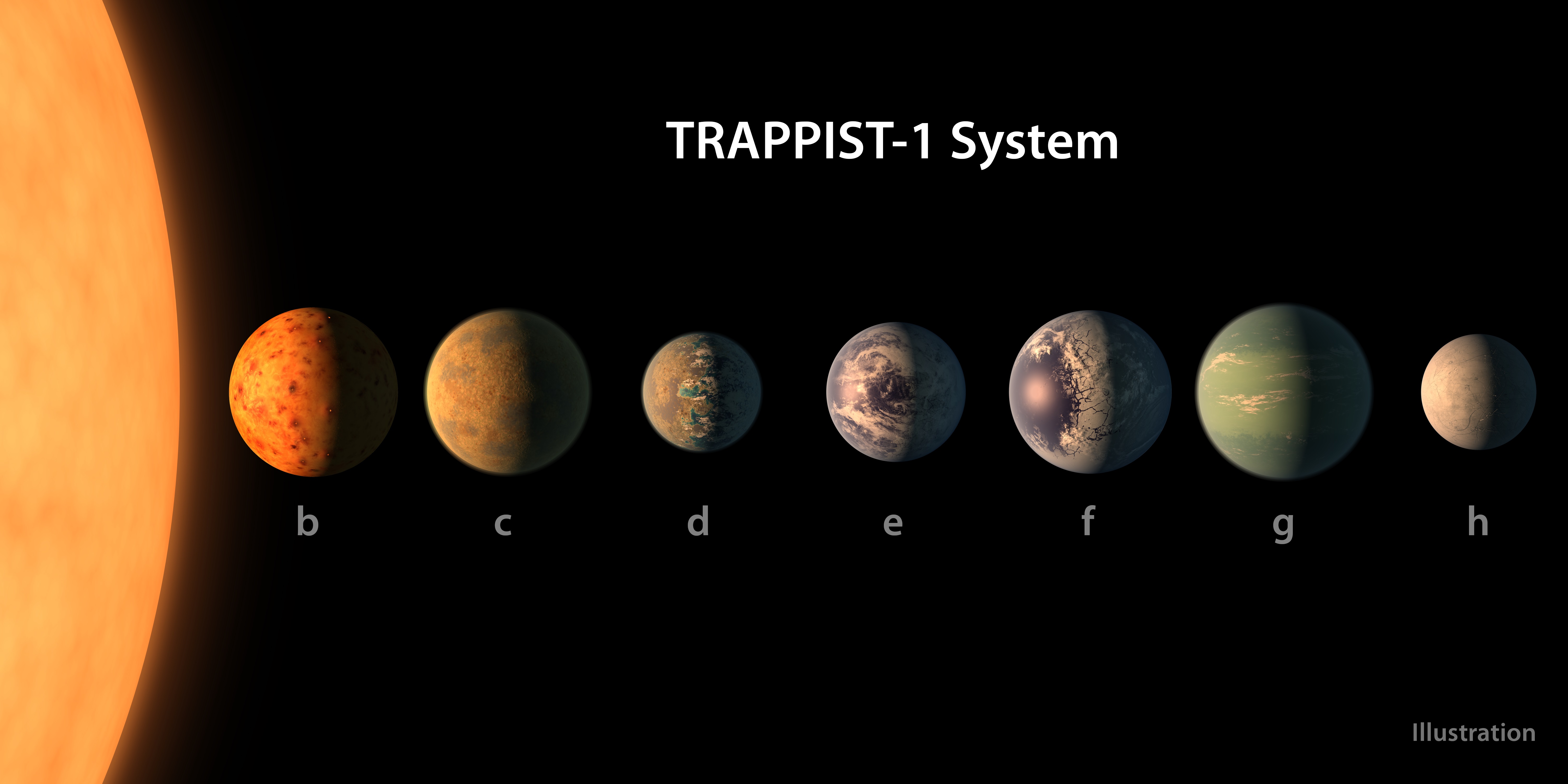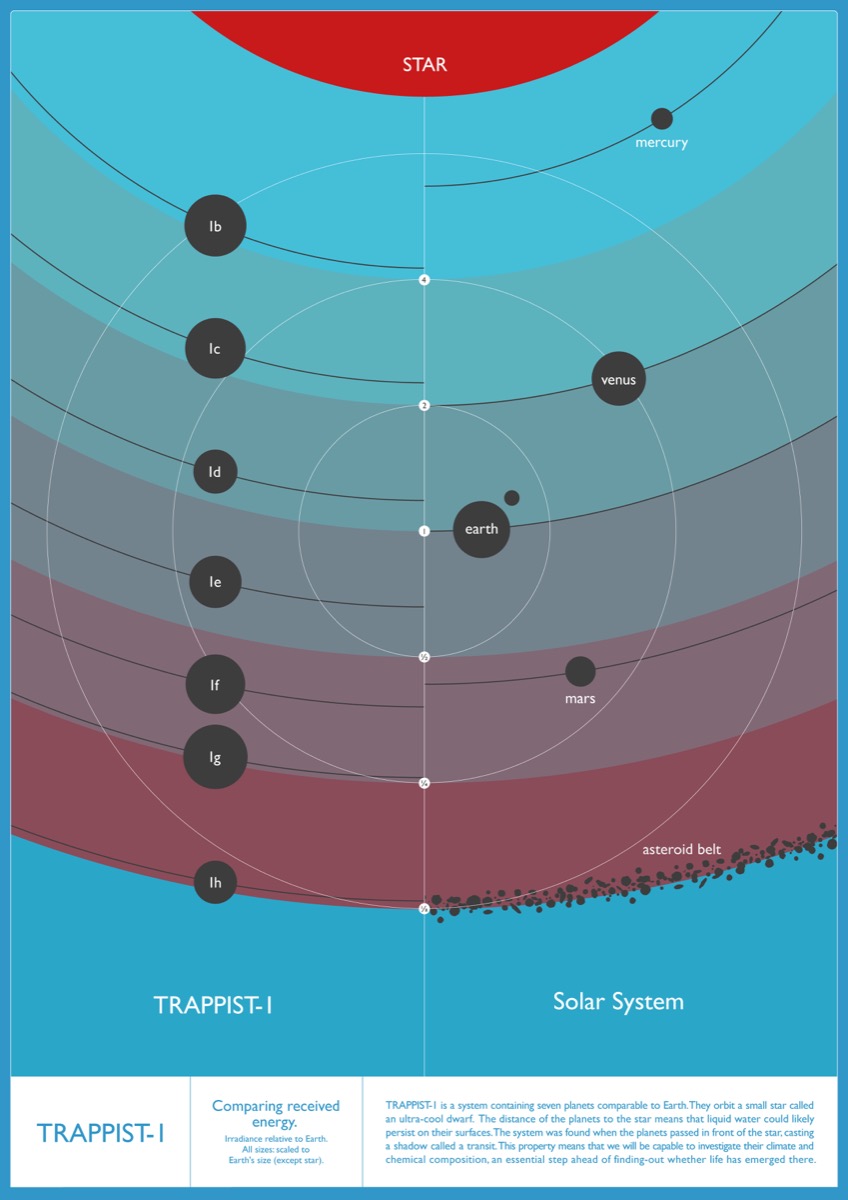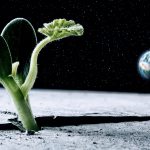Key Takeaways:
- NASA discovered seven Earth-sized planets orbiting a nearby star in the ‘temperate zone’, potentially capable of hosting liquid water and extraterrestrial life.
- These planets, detected around an ultracool dwarf star named TRAPPIST-1, have Earth-like masses and surface temperatures ideal for supporting water and life.
- The system’s structure and similarities to our Solar System raise hopes for habitability, but more research is needed to understand these distant planets fully.
- Despite differences in size and proximity, TRAPPIST-1’s system bears resemblance to our own, showcasing the potential prevalence of Earth-like planets in the galaxy.
- The James Webb Space Telescope and the Extremely Large Telescope aim to provide deeper insights into the composition and potential habitability of these exoplanets.
In an extraordinary exoplanet discovery, NASA revealed seven Earth-sized planets orbiting within the ‘habitable zone’ of a star located just 39 light-years away, marking a significant milestone in space exploration.
These planets, found around an ultracool dwarf star known as TRAPPIST-1, have sparked enthusiasm due to their potential similarities to Earth, including their size and surface temperatures ranging from 0 to 100°C (32 to 212°F). NASA described this discovery as a ‘sister solar system’ to our own, raising the possibility of these planets hosting liquid water and, perhaps, life beyond Earth.
The groundbreaking announcement came during a live press conference, following intense speculation regarding a remarkable “discovery beyond our Solar System.” The exoplanets were initially detected circling the TRAPPIST-1 star by a team of astronomers led by Michaël Gillon from the University of Liège in Belgium, utilizing Earth-based telescopes.
Further exploration using NASA’s Spitzer space telescope unveiled an additional four planets in the system, indicating that at least five of these planets share similarities in mass with Earth and potentially have rocky compositions, according to initial estimates.
Most significantly, three of these planets appear to reside within the star’s ‘temperate zone,’ indicating surface temperatures conducive to the existence of liquid water and the potential for extraterrestrial life.

The European Space Observatory hailed this discovery as “the most incredible star system to date.”
While the findings excite the prospects of habitable exoplanets, researchers caution that substantial additional analysis is required, especially regarding the outermost planet’s behavior and orbital patterns around TRAPPIST-1.
Due to the immense distance, uncertainties persist regarding the existence of water or the potential habitability of these planets. However, early indications suggest that at least three of these planets could harbor liquid oceans, drawing striking parallels to our own Solar System.
Despite striking resemblances, there are notable differences between TRAPPIST-1 and our system, primarily related to size and proximity. TRAPPIST-1, slightly larger than Jupiter, exhibits a planetary arrangement with closer orbits, with the nearest planet completing an orbit in just 1.5 days, and the sixth planet in 13 days.

This close proximity might lead to gravitational interactions among the planets, possibly resulting in tidal locking, akin to Jupiter’s moons’ relationship with the giant planet.
The implications of this discovery extend beyond the unique TRAPPIST-1 system. It suggests that Earth-sized planets might be more common in the galaxy than previously assumed, according to Ignas A. G. Snellen, an astronomer from Leiden University.
Sean Carey, NASA’s Spitzer Science Centre manager, aptly encapsulated the awe-inspiring nature of this discovery, highlighting the wonders of the galaxy we inhabit.
The research unveiling these remarkable seven Earth-sized worlds has been published in the journal Nature.


